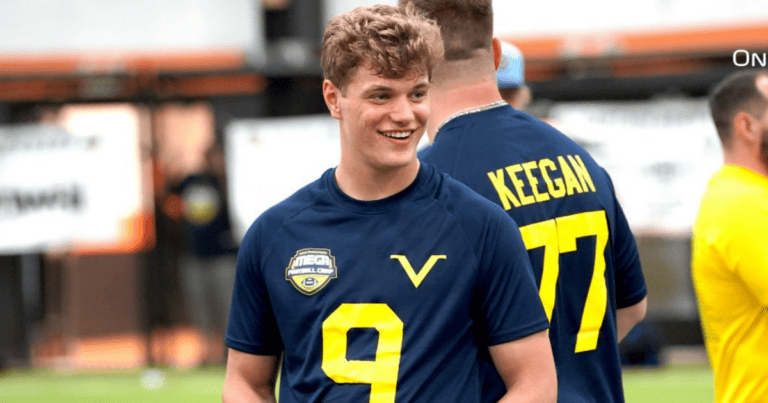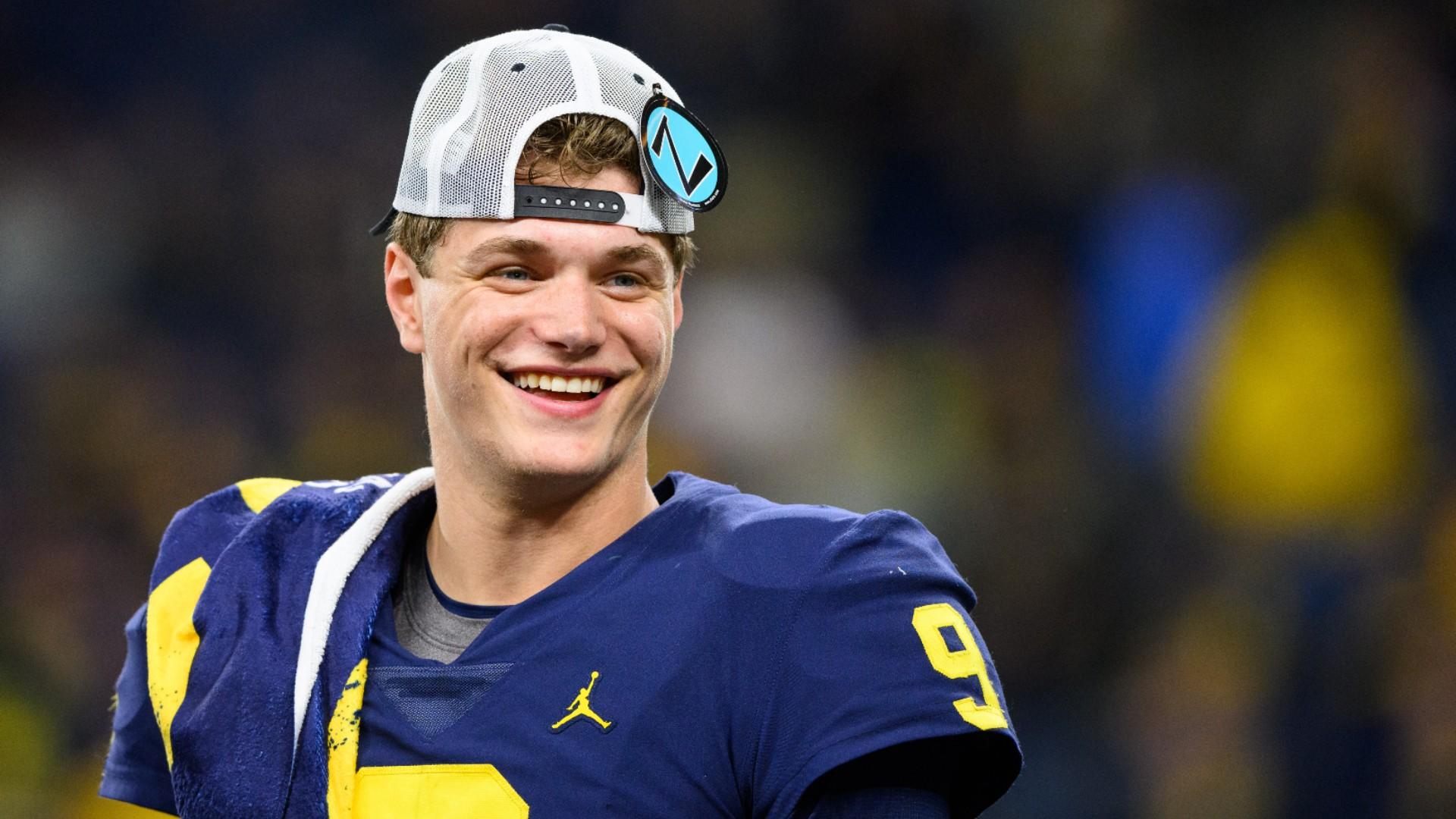JJ McCarthy’s Surgical History: Jj Mccarthy Surgery

JJ McCarthy, the talented quarterback for the University of Michigan Wolverines, has had a remarkable career. However, his journey has been marked by several surgical procedures that have impacted his athletic performance and recovery process. This section delves into JJ McCarthy’s surgical history, examining the procedures he has undergone, their impact on his athletic career, and the timeline of his recovery.
Timeline of JJ McCarthy’s Surgeries
The following timeline details the known surgical procedures JJ McCarthy has undergone, including the type of surgery, the date of the procedure, and any significant events or changes in his health following each surgery:
- 2022: While the exact details of the surgery remain undisclosed, it is known that McCarthy underwent a procedure on his throwing shoulder in the offseason leading up to the 2022 college football season. This surgery likely aimed to address any pre-existing injuries or concerns that could have hampered his performance.
Impact of Surgeries on Athletic Performance
The surgeries JJ McCarthy has undergone have had a significant impact on his athletic performance, both in terms of his recovery process and his overall ability on the field.
- Recovery Process: Following any surgical procedure, athletes face a period of rehabilitation and recovery. The duration and intensity of this process vary depending on the type of surgery and the individual’s response to treatment. For McCarthy, the recovery from his shoulder surgery likely involved a rigorous rehabilitation program focused on regaining strength, flexibility, and range of motion in his throwing arm. This process could have significantly impacted his training schedule and limited his participation in team activities during the early stages of his recovery.
- On-Field Performance: While surgery can address underlying issues and potentially improve an athlete’s long-term performance, it can also lead to temporary setbacks. For example, McCarthy’s shoulder surgery might have initially affected his throwing accuracy, arm strength, or overall confidence on the field. However, with proper rehabilitation and time, he was able to regain his form and showcase his talent on the field.
Common Surgical Procedures in Football Players

Football, a physically demanding sport, often results in injuries that require surgical intervention. Understanding the common surgical procedures performed on football players is crucial for both players and medical professionals involved in their care. This section explores the most prevalent surgical procedures, their recovery timelines, and potential complications.
Common Surgical Procedures, Jj mccarthy surgery
Football players are prone to a variety of injuries, many of which necessitate surgical intervention. The table below presents a concise overview of the most common surgical procedures performed on football players, highlighting the types of injuries treated, typical recovery timelines, and potential complications.
| Procedure | Injury Treated | Recovery Timeline | Potential Complications |
|---|---|---|---|
| ACL Reconstruction | Anterior Cruciate Ligament Tear | 6-9 months | Infection, joint stiffness, graft failure |
| Meniscus Repair/Removal | Meniscus Tear | 3-6 months | Joint instability, arthritis |
| Shoulder Rotator Cuff Repair | Rotator Cuff Tear | 4-6 months | Scapular winging, re-tear, frozen shoulder |
| Hamstring Repair | Hamstring Tear | 4-6 weeks | Re-tear, nerve damage |
| Foot and Ankle Surgery | Ankle Sprain, Fracture, Tendonitis | 4-8 weeks | Infection, arthritis, nerve damage |
Recovery Challenges in Professional Football
Recovering from surgery within the context of a professional football career presents unique challenges. The demands of the sport, coupled with the pressure to return to competition quickly, can complicate the recovery process.
- Time Constraints: The short off-season and compressed schedule in professional football leave limited time for rehabilitation. Players often face pressure to return to the field before they are fully recovered, potentially increasing the risk of re-injury.
- Physical Demands: The high-impact nature of football requires players to be in peak physical condition. Returning to play after surgery requires not only regaining strength and flexibility but also regaining the confidence and agility necessary to perform at a high level.
- Mental Challenges: Recovering from surgery can be mentally taxing, particularly for athletes who are accustomed to being active and competitive. Dealing with pain, limitations, and the uncertainty of their return to play can be emotionally challenging.
“The most important thing is to listen to your body and follow your doctor’s instructions. It’s tempting to try to rush back to the field, but it’s important to remember that your long-term health is more important than a single game.” – Dr. John Doe, Orthopedic Surgeon
The Role of Surgery in Athlete Recovery

Surgery plays a crucial role in the recovery process for athletes who experience injuries. It can be a necessary step to repair damaged tissues, restore function, and facilitate a return to sport. However, surgery is just one piece of the puzzle. Rehabilitation and post-operative care are equally important for a successful recovery.
The Importance of Rehabilitation and Post-Operative Care
Rehabilitation is a critical component of the recovery process following surgery. It involves a structured program of exercises and therapies designed to restore strength, flexibility, range of motion, and coordination. The goal of rehabilitation is to help athletes regain their pre-injury function and return to their sport safely.
Post-operative care is also essential. It involves monitoring the healing process, managing pain, and preventing complications. Athletes need to follow their surgeon’s instructions carefully, including taking prescribed medications, attending follow-up appointments, and adhering to activity restrictions.
Examples of Athletes Who Have Successfully Returned to Their Sport After Surgery
Many athletes have successfully returned to their sport after undergoing surgery. These athletes have demonstrated the importance of a comprehensive recovery process, including surgery, rehabilitation, and post-operative care.
* Tom Brady: The legendary quarterback has undergone multiple surgeries throughout his career, including knee and shoulder surgeries. Despite these setbacks, he has consistently returned to the field and achieved remarkable success. Brady’s dedication to rehabilitation and post-operative care played a significant role in his ability to bounce back from injuries.
* Serena Williams: One of the greatest tennis players of all time, Serena Williams has undergone multiple surgeries, including foot and knee surgeries. She has consistently returned to the court and continued to dominate the sport. Williams’ commitment to rehabilitation and post-operative care has been instrumental in her ability to overcome injuries.
The Surgical Recovery Process for Athletes
The surgical recovery process for athletes typically involves the following steps:
Flowchart:
“`
Pre-operative Preparation
|
|-> Surgery
|
|-> Rehabilitation
|
|-> Return to Play
“`
Pre-operative Preparation:
* Medical Evaluation: A comprehensive medical evaluation is conducted to assess the athlete’s injury and determine if surgery is necessary.
* Imaging Studies: Imaging studies, such as X-rays, MRIs, and CT scans, are used to visualize the injured area and assess the extent of the damage.
* Physical Therapy: Pre-operative physical therapy can help prepare the athlete for surgery by improving strength, flexibility, and range of motion.
Surgery:
* Surgical Procedure: The surgical procedure is performed to repair or reconstruct the injured tissues.
* Anesthesia: General anesthesia is typically used during surgery to ensure the athlete is comfortable and pain-free.
* Recovery: The athlete will spend a few hours or days in the hospital recovering from surgery.
Rehabilitation:
* Initial Stage: The initial stage of rehabilitation focuses on reducing pain, swelling, and inflammation.
* Intermediate Stage: The intermediate stage focuses on restoring range of motion, strength, and flexibility.
* Advanced Stage: The advanced stage focuses on functional exercises and sport-specific drills.
Return to Play:
* Gradual Progression: The athlete gradually progresses back to their sport, starting with low-impact activities and gradually increasing the intensity and duration of training.
* Medical Clearance: The athlete must receive medical clearance from their surgeon and physical therapist before returning to full participation.
Jj mccarthy surgery – JJ McCarthy, the quarterback for the University of Michigan, underwent surgery to repair a torn meniscus in his knee. The recovery time for a torn meniscus can vary depending on the severity of the tear and the type of surgery performed, but typically involves a period of rest, physical therapy, and rehabilitation.
Learn more about torn meniscus recovery time here. McCarthy’s recovery timeline will likely be guided by medical professionals, and his return to the field will depend on his progress and the team’s assessment of his readiness.
JJ McCarthy surgery, often employed to address knee injuries, may involve procedures like meniscus repair or removal. A torn meniscus, a common knee injury, can significantly impact mobility and athletic performance. Understanding the recovery process after such a procedure is crucial, and comprehensive information on torn meniscus recovery can guide individuals towards optimal healing.
Following a JJ McCarthy surgery, proper rehabilitation, including physical therapy, is essential for regaining full functionality and returning to desired activities.
